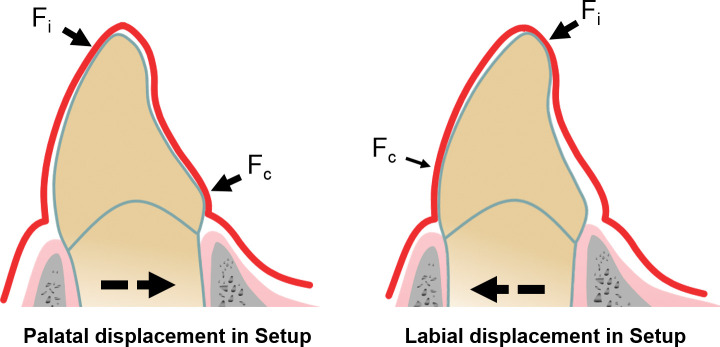Figure 6.
Schematic explanation of the bodily movement capacity of an aligner. This capacity is related to its ability to generate both a countertipping force couple and moment. Its magnitude depends on the smallest contact force component. The tight curvature at the incisal edge reinforces the aligner, leading to relatively high incisal contact forces (Fi) for both displacement directions. In contrast, the cervical contact force (Fc) is higher for palatal tooth displacement (left) than for labial displacement (right). This is due to the specific aligner geometry leading to reinforcement in the cervicopalatal region.

